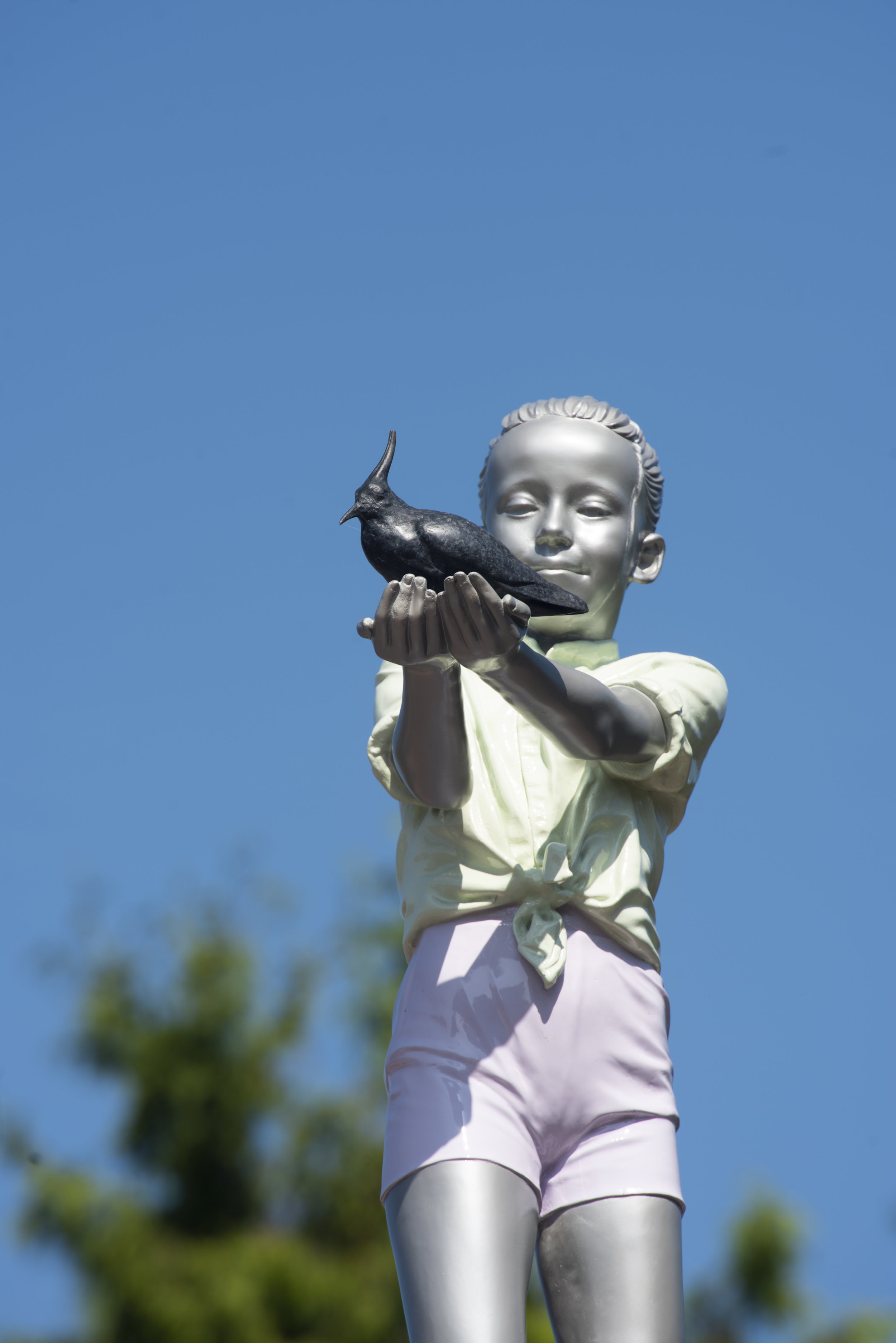Lucy & Jorge Orta

"the visual power of art is a potent tool for change."
Could you tell us a bit about yourselves and your background? Where did you guys study?
Jorge studied simultaneously at the faculty of fine arts (1972–79) and the faculty of architecture (1973–80) of the Universidad Nacional de Rosario in Argentina. He was a lecturer in the faculty of fine arts and a member of CONICET (National Scientific and Technical Research Council Argentina). He moved to France in 1984 receiving a scholarship from the Ministry of Foreign and European affairs to pursue a D.E.A. (Diplôme d'études approfondies) at the Sorbonne in Paris.
Lucy studied Fashion Knitwear Design at Nottingham Trent University in the UK (1985-89), she moved to Paris in 1991 to work as a designer and transitioned gradually into contemporary art.
In acknowledgement of her innovative socially driven work, she was nominated as Head of Man & Humanity, a pioneering master program that stimulates socially driven and sustainable design, which she cofounded with Li Edelkoort at the Design Academy in Eindhoven (2002). She has been a Professor at London College of Fashion since 2002 and is currently the Chair of Art and the Environment at the University of the Arts London. In recognition of her academic contribution to the visual arts, she has received an honorary Master of Arts from Nottingham Trent University and an honorary Doctor of Letters from the University of Brighton.
Lucy and Jorge Orta co-founded the Studio Orta in 1992. They have worked in partnership since 2005 under the co-authorship Lucy + Jorge Orta.
Fountain Sloten - © Het Hoge Noorden 2018
You were recently commissioned to create a fountain for the project named: 11 FOUNTAINS: CONNECTED BY WATER, as part of Leeuwarden-Friesland European Capital of Culture 2018, along with 11 international artists who have designed Fountains for the 11 cities of Friesland, with fellow British artist Cornelia Parker being one of them. Could you tell us a bit about this project and the fountain you created?
Visiting Sloten was a very intimate experience, the proximity to the residents is reflected in the familiarity of the domestic space often surrounds the houses. Wide open windows, washing drying in the wind, home-cooked products on the door steps, benches under the window sill, familiar domestic utensils in the gardens. I immediately felt at home in this familiarity and personal proximity to the everyday.
The water containers piled up high as the base of the fountain could easily have been placed in the square, while residents were stopping off at the corner shop to buy some groceries. Yet, the water brims endlessly over, filling up the vessels and spilling out again into the next, it seems the water will never dry-up. The children of Sloten have scrambled up on top of the mountain of water containers to release the peewit. As many of you may remember, collecting Peewit eggs in the Spring is an ancient tradition. This has now been banned because of the decline in species due to intensive farming, which has destroyed their natural grassland habitat.
The Peewit fountain talks about the familiarity of the everyday, and traditions that are specific to Friesland, yet there is a universal message - what yet we take for granted in our communities, is not always so abundant elsewhere.
Fountain Sloten - © Het Hoge Noorden 2018
Tell us a bit about how you spend your day/studio routine? What is your studio like?
We have a studio in central Paris where all the conceptualisation of projects, drawing, models and fine couture work takes place. Our larger-scale works are made and assembled at Studio Orta Les Moulins, in Seine-et-Marne. Studio Orta Les Moulins was founded by Lucy + Jorge Orta in 2000 in the historical birth place of the French paper industry, the former Papeteries du Marais. Located along an 8-km stretch of the Grand Morin river valley the complex of industrial buildings that make up Les Moulins include, the Moulin Sainte-Marie, Moulin de Boissy, Moulin La Vacherie and La Laiterie.
The artists imagined Les Moulins as collective environment dedicated to the creation of new forms of contemporary art and over the years of careful restoration the complex has become a veritable cultural laboratory. Comprised of artist studios, workshops, residencies, exhibition galleries, performance venues and a sculpture park, Studio Orta Les Moulins has hosted artists and researchers from around the world, to create artworks that resonate with the history of the place and re-imagine the future.
"Symphony For Absent Wildlife" (still) 2015
"Ortawater - Fluvial Intervention Unit" 2005
"Refugee Wear - Habitent" 1992-93
How do you feel being a duo affects the way you work?
Our motto is 1 + 1 = millions we are more than the sum of our parts.
Your work focuses on social and ecological issues, do you feel art can be a useful tool for social/political change?
Yes, the visual power of art is a potent tool for change.
Apart from the 11 Fountains project, Is there anything new and exciting in the pipeline you would like to tell us about?
Another public sculpture is currently on exhibition at the World Heritage site Fountains Abbey Studley Royal in England England, and will travel to Cass Sculpture Foundation in the autumn.
http://www.studio-orta.com/en/artwork/688/Potential-Architecture-Gazing-Bal
11 Fountains: Connected By Water - Leeuwarden-Friesland European Capital of Culture 2018
Published: 10/07/2018
All images courtesy of the artists and the 11 Fountains: Connected by Water, Friesland



